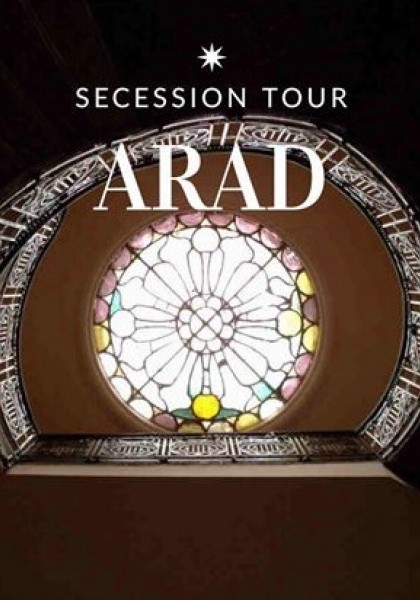The Szantay Palace - The Cultural Palace - The Reinhard Palace - The Bohuș Palace - The Főldes Palace - The Serbian Palace
1. The Szantay Palace
The imposing residential building named after the architect Louis Szantay, who has made his mark in an overwhelmingly urban landscape of Arad. The with great finesse rich decorated exterior is remarkable, for instance the human figures that support the balconies from the first storey.
2. The Cultural Palace
The building displays a variety of styles: the façade in neoclassical style, is decorated with a pediment supported by massive columns in the Corinthian style, and above it is guarded by a massive tower, the wings on the sides are dominated by elements of the Italian Renaissance style, the building’s side from the park was inspired by elements from the castle from Hunedoara, a building of gothic influence. The monumental staircase leads the visitor into a beautiful lobby made from marble from Moneasa, from here there also is access to the magnificent concert hall.
The construction of the building was initiated since 1901 by the Kölcsey Cultural Society from Arad, which started taking the steps towards constructing a building that would house the local museum, the town library and a concert hall. In the concert hall numerous musical local and abroad personalities performed concerts (the tenor Traian Grozăvescu, Richard Strauss, Bartók Béla and especially the composer and violinist George Enescu). Currently, the Cultural Palace houses the headquarters of the County Museum and the State Philharmonic.
3. The Reinhardt Palace
The building has been built at the beginning of the 1800s at the wish of the Reinhardt family and modified in 1898 in the Secesion style.
4. The Bohuș Palace
Ordered by THE Bohuș baron, the palace is the art opera of the architect Lajos Szantay. The edifice (a P + 3) is a large one, it covers the Revolutiei Boulevard, the Vasile Goldis street and the Românului street and it houses residential houses, shops and bank offices. This building was the host of the first cinema hall.
What draws attention to this building, besides its great size, are its registers constructed in a bright way with a large alternation of the openings which, although rectangular, take on various forms depending on the framings shaped from plaster. For example, the façade at the ground level is a combination of the windows crystals, travertine and brass ornaments.
5.The Földes Palace
The palace of Földes Kelemen, a pharmacist from Arad, whose medicine and cosmetics were famous not only in Europe, but also in the distant America, attracts the passers-by with its distinctive beauty. In order to keep up with the present style of that time, Földes Kelemen hires Tabacovici Emil, to design a two-storey building in the the Secession style, the furniture in the pharmacy, but also the advertisement for his cosmetical products.
The owner was content with the project of the future house and decided to demolish the old one-story building and to build another one instead, which was finished in the year 1900. The year 1900 marks the beginning of this style in Arad, Tabacovici Emil being one of the trendsetters for this en vogue style, being followed by projects of other architects from Arad.
6. The Serbian Palace
Located in the Serbian square, the palace was built in the early twentieth century by the architect Milan Tabacovici, being the headquarters of the Serbian Parish Office. It is a two-storey building of large proportions, which is stretched out on tree streets. The assymetry of decorative elements draws attention and removes the sameness of the building.
